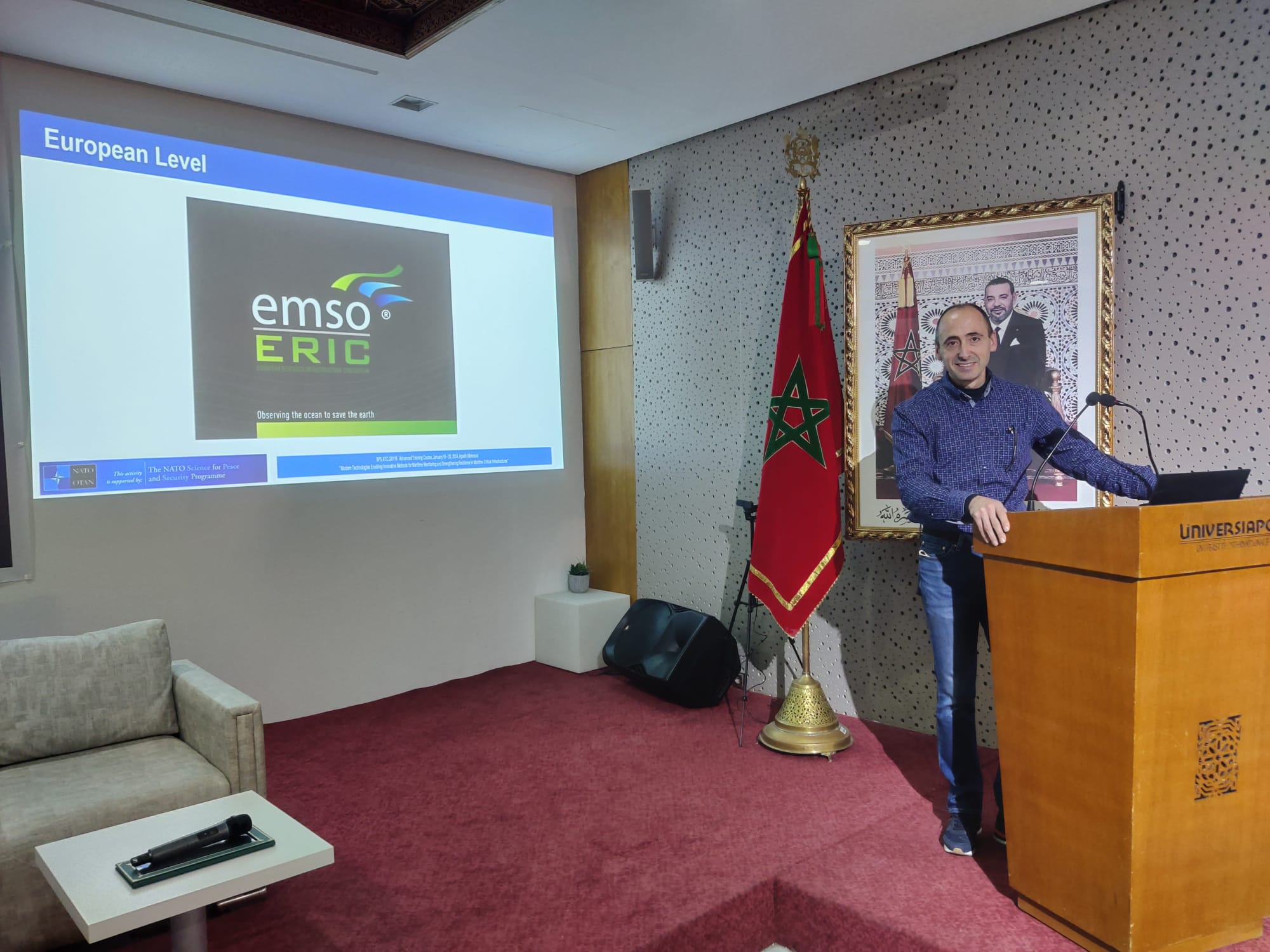The work conducted by EMSO has been highlighted at the NATO Advanced Training Course at the Universiapolis – Université Internationale d’Agadir, Marocco, thanks to presentations by representatives from the Universitat Politècnica de Catalunya. Joaquín del Río, who leads the EMSO Regional Facility, OBSEA, in Spain, presented on “Modern technologies enabling innovative methods for marine in situ monitoring: cabled observatories, moorings, drones, and drifters,” while Daniel Toma spoke on “Marine Robotics Technologies for underwater and surface monitoring and actuation: Drones overview AUV, ROV, USV, IOV and others.”
Learn more about the above mentioned presentations:
“Modern technologies enabling innovative methods for marine in-situ monitoring: cabled observatories, moorings, drones and drifters”
Joaquin Del Rio, Universitat Politecnica de Catalunya, Spain
Ocean monitoring requires high technological solutions to ensure good data quality and endurance of the measurement systems. During this talk we will go through the main observation platforms used today for in-situ ocean monitoring, from the surface, water column and seabed. The ocean is full of technology. In situ or remote observational platforms are gathering data continuously. At surface, ocean driters measuring sea surface temperature, currents and wave parameters are crucial to feed ocean mathematical models used for forecasting, and such in-situ measurements are used for calibration of remote sensing technologies like satellite measurements. On the water column, fixed stations like moorings are equipped with sensors at different depths, from surface, through water column, until seabed, measuring time series at fixed points. on the other side, ocean gliders are able to perform water column measurement of the upper 1500m, navigating during many months and piloted from experts remotely. Finally, cabled seabed stations allow unprecedent knowledge of the environment: without power or bandwidth constrains, such infrastructures provide 24/7 information of the site. Payload of such stations include physical and biogeochemical information from the ocean, including a huge variety of direct and indirect variables, from temperature to underwater noise and images. International coordination to better achieve scientific objectives is crucial, and some examples will be explained like EMSO ERIC, EUROARGO, JERICO-RI among others.
“Marine Robotics Technologies for underwater and surface monitoring and actuation: Drones overview AUV, ROV, USV, IOV and others”
Daniel Toma, Universitat Politecnica de Catalunya, Spain
Underwater marine robotics is becoming nowadays a very useful technology that helps scientists and stakeholders to monitor, sample, and actuate at unprecedented locations in the ocean. These systems have an ever-expanding range of applications. They can operate in deep waters to carry out scientific missions like profiling, mapping, and geological and geophysical surveys; commercial missions like inspecting assets and infrastructure; exploration missions for minerals and seabed mining; and public authority missions like surveillance and search and find (like finding aircraft wreckage). Monitoring networks of cooperative underwater marine robotics can expand our spatiotemporal monitoring capabilities, resolution, and reach, providing the suitable infrastructure to manage data flow from robotic technologies equipped with innovative sensor packages. This talk will give an overview of different types of marine robotics, the challenges of navigation, geolocalization, different types of missions, payload, and applications where such drones arrive where humans do not.

For more information, please visit https://www.atcnato-universiapolis.com/
Photo 1: Joaquin del Rio, presenting EMSO at the NATO Advanced Training Course.
Photo 2: Daniel Toma, during his presentation on “Marine Robotics Technologies for underwater and surface monitoring and actuation: Drones overview AUV, ROV, USV, IOV and others.”


